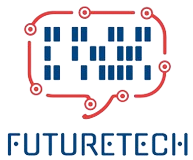Introduction
In the rapidly evolving landscape of artificial intelligence and machine learning, the efficiency of model training is a critical factor that can significantly influence the performance of applications. One of the pivotal advancements in this domain is the utilization of Ironwood TPU (Tensor Processing Unit). This article delves into how Ironwood TPU enhances model training efficiency, the underlying mechanisms, and the broader implications for the field.
Understanding TPU Technology
Before diving into the specifics of Ironwood TPU, it’s essential to grasp the fundamental concept of TPU technology. TPUs are specialized hardware accelerators designed to optimize the performance of neural network computations. They are particularly adept at handling the matrix and vector operations prevalent in deep learning, allowing for faster data processing and model training.
Historical Context of TPU Development
The evolution of TPUs began at Google, where researchers sought ways to enhance the computational capabilities required for machine learning tasks. The first-generation TPUs emerged in 2016 and have undergone continuous improvements, culminating in the sophisticated versions available today, including the Ironwood TPU.
Key Features of Ironwood TPU
- High Performance: Ironwood TPUs provide superior processing speeds, dramatically accelerating the training of machine learning models.
- Scalability: These units can easily scale up to handle larger datasets and more complex models without compromising efficiency.
- Energy Efficiency: Compared to traditional GPUs, Ironwood TPUs are more energy-efficient, leading to cost savings on power consumption.
- Integration with TensorFlow: Ironwood TPUs are designed for seamless integration with TensorFlow, making it easier for developers to leverage their capabilities.
Improving Model Training Efficiency
Now, let’s explore how Ironwood TPU specifically improves model training efficiency.
1. Speeding Up Training Times
One of the standout features of Ironwood TPU is its ability to significantly reduce the time required for model training. By utilizing thousands of cores to process data in parallel, Ironwood TPUs can handle larger batches of data simultaneously. This parallelism is crucial in deep learning, where processing time can become a bottleneck.
2. Enhanced Support for Complex Models
As machine learning models become increasingly complex, the computational demands grow exponentially. Ironwood TPUs are engineered to support larger and more intricate models, enabling data scientists and engineers to experiment and iterate faster. This capability is particularly beneficial for deep learning applications, such as image and speech recognition.
3. Lower Latency in Training
Ironwood TPUs also offer lower latency during training sessions. The reduced latency ensures quicker feedback loops, which are essential for fine-tuning models based on real-time data. This aspect is especially vital in applications where decisions are made in milliseconds, such as autonomous driving.
4. Optimized Resource Utilization
Efficient resource utilization is critical for organizations looking to maximize their return on investment in hardware. Ironwood TPUs are designed to optimize memory usage and computational resources, reducing the overhead typically associated with model training. This optimization not only speeds up training times but also lowers operational costs.
Real-World Applications of Ironwood TPU
The benefits of Ironwood TPU extend beyond theoretical improvements; numerous industries are already reaping the rewards of enhanced model training efficiency.
1. Healthcare
In healthcare, Ironwood TPUs are being utilized to train models that predict patient outcomes and assist in diagnostics. The speed and efficiency of Ironwood TPUs allow healthcare professionals to analyze vast amounts of data quickly, leading to improved patient care and outcomes.
2. Finance
Financial institutions leverage Ironwood TPU for risk assessment and fraud detection models. The rapid processing capabilities enable these organizations to analyze trends and anomalies in real-time, enhancing their decision-making processes.
3. Autonomous Vehicles
In the automotive industry, Ironwood TPUs contribute to the training of AI models for autonomous vehicles. The low latency and high performance ensure that vehicles can make informed decisions based on the surrounding environment, significantly enhancing safety and efficiency.
Future Predictions for TPU Technology
As AI and machine learning continue to evolve, the future of TPU technology looks promising. Here are some predictions for the trajectory of Ironwood TPUs and similar technologies:
- Increased Integration with AI Development Frameworks: As developers seek more user-friendly options, we can expect further integration of TPUs with popular AI frameworks.
- Advancements in Hardware Design: Future iterations of TPUs may incorporate cutting-edge technology to enhance performance even further.
- Broader Adoption Across Industries: We will likely see an increase in the adoption of TPUs across various sectors, driven by the need for rapid and efficient model training.
Conclusion
The introduction of Ironwood TPU marks a significant advancement in the quest for more efficient model training in machine learning and artificial intelligence. With its high performance, scalability, and energy efficiency, Ironwood TPU not only enhances the speed and effectiveness of training processes but also opens new avenues for innovation across various industries. As technology continues to evolve, embracing these advancements will be crucial for organizations aiming to stay competitive in a data-driven world.

